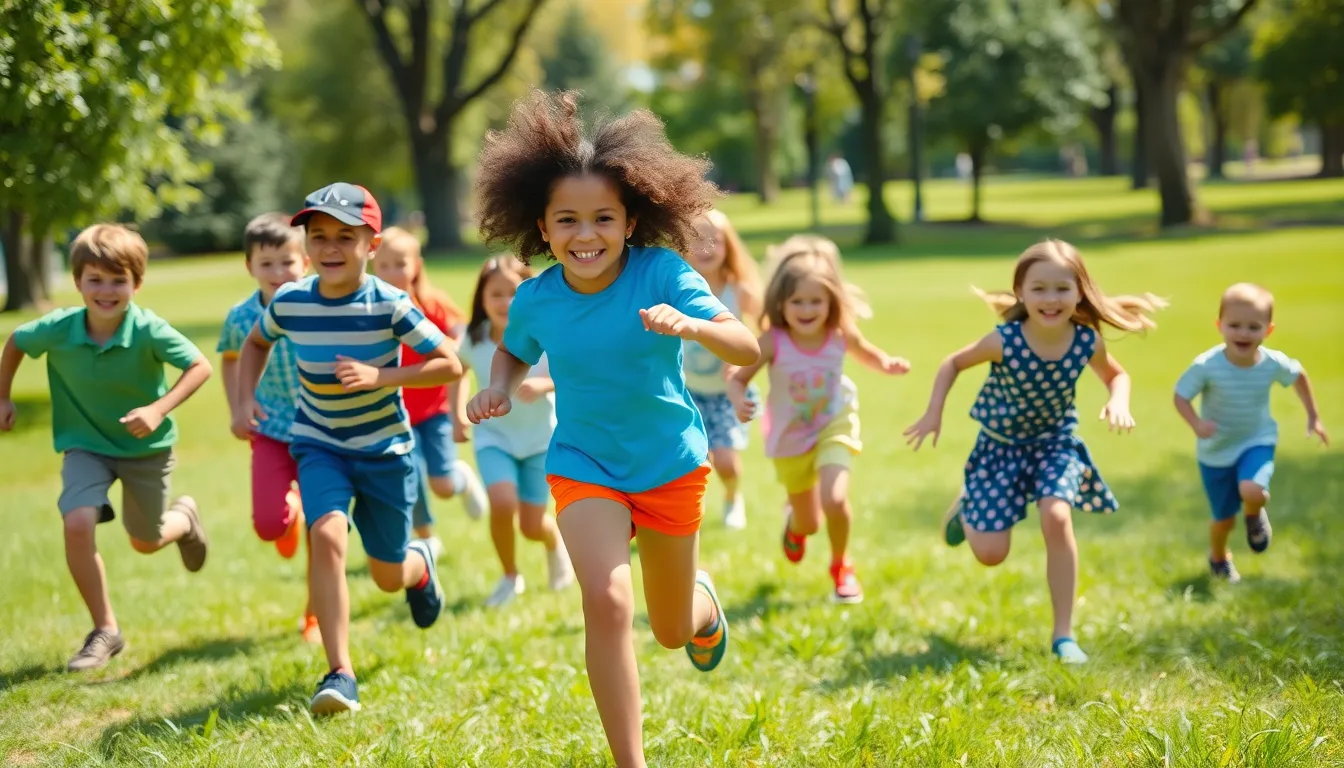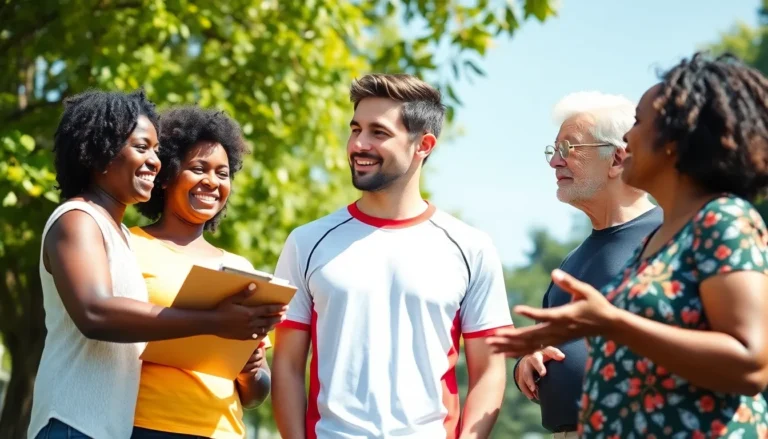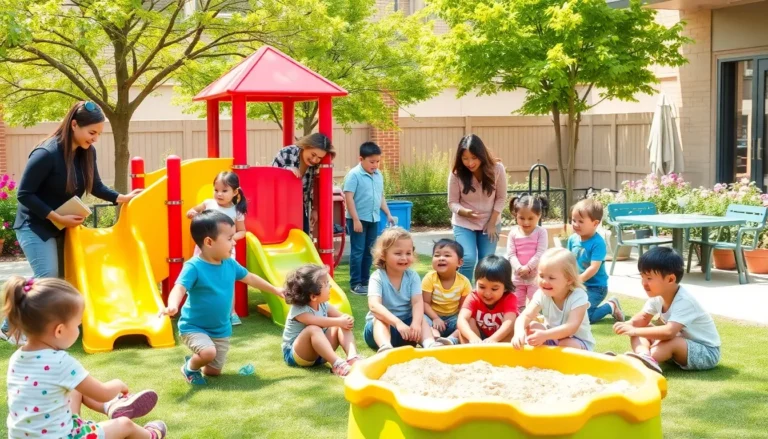When it comes to kids, staying still is about as popular as a soggy sandwich at lunch. That’s where gross motor activities come in, transforming wiggly little bodies into agile athletes. These activities are more than just fun; they’re essential for developing coordination, balance, and strength. Think of them as the secret sauce to a child’s physical and mental growth.
Table of Contents
ToggleUnderstanding Gross Motor Activities
Gross motor activities encompass large muscle movements that involve the entire body. Engaging in these activities is fundamental for physical and mental development in children.
Definition and Importance
Gross motor activities involve movements that engage large muscle groups, such as running, jumping, and climbing. These activities support fundamental physical skills, enhancing coordination, balance, and strength. They play a vital role in a child’s overall development, helping to promote physical fitness and healthy habits. Beyond physical benefits, these activities contribute to a child’s emotional well-being by providing opportunities for play and social interaction.
Developmental Milestones
Children achieve several developmental milestones through gross motor activities. Typically, infants begin with rolling and crawling, progressing to walking and running by age one. As children reach age three, they often refine skills like jumping and balancing. By age five, activities may include hopping on one foot and riding a tricycle. Each milestone marks significant progress in a child’s physical capabilities, demonstrating growth in confidence and coordination.
Types of Gross Motor Activities
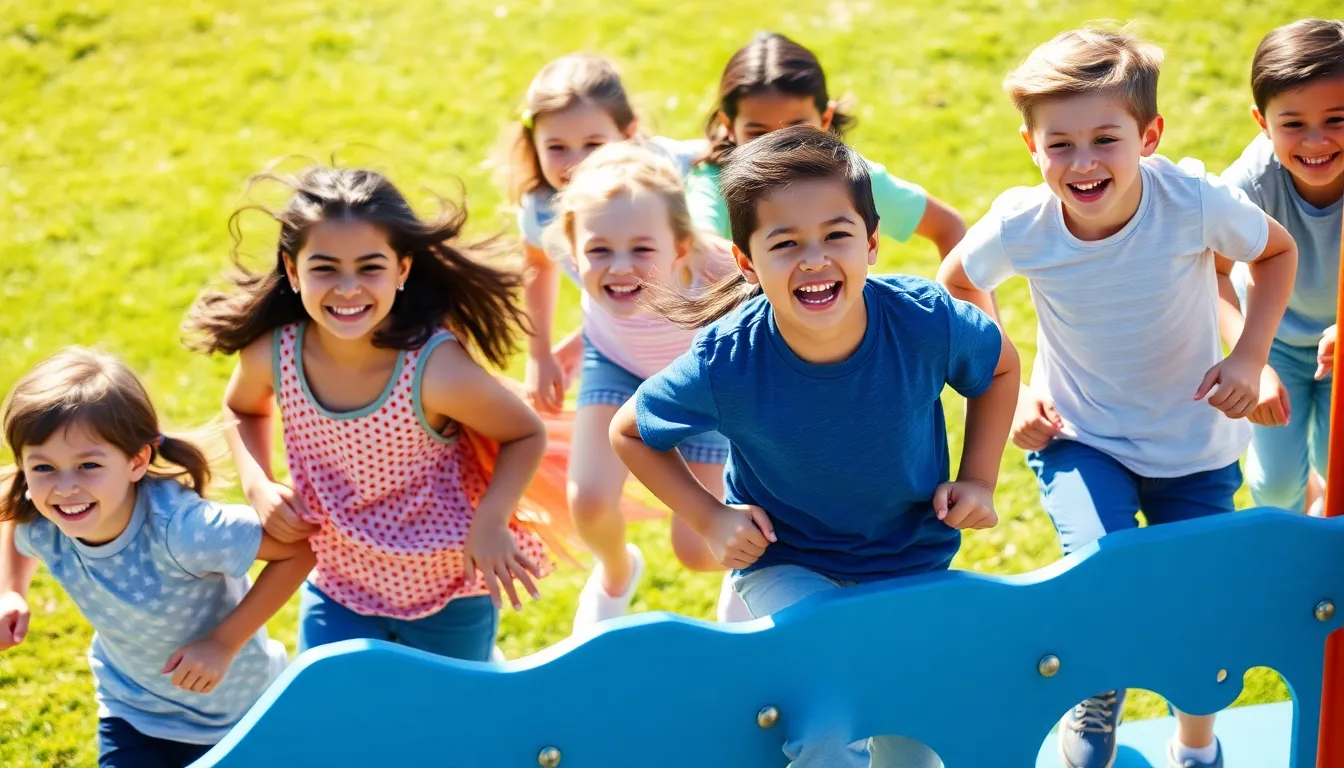
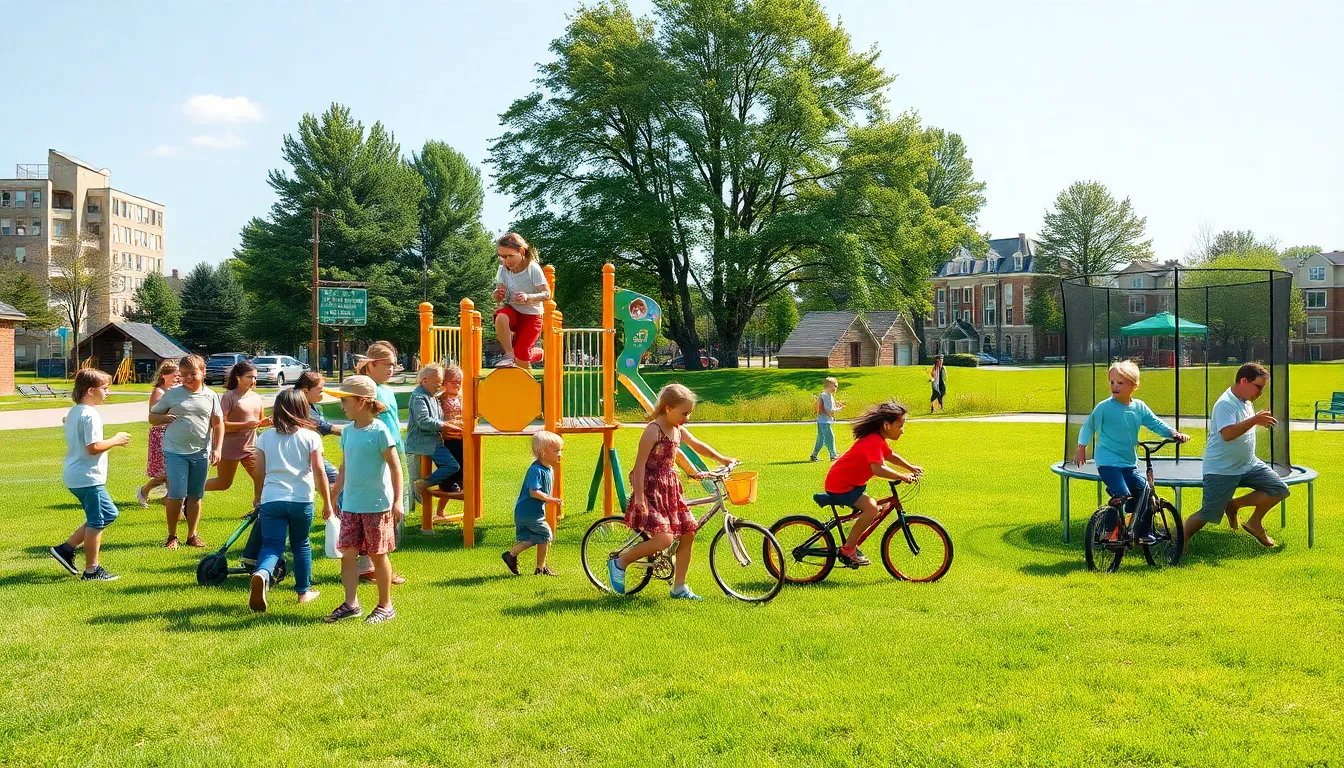
Gross motor activities can be categorized into outdoor and indoor activities, both of which support children’s physical development.
Outdoor Activities
Running around in open spaces promotes cardiovascular health and improves endurance. Climbing structures at parks enhances strength and coordination, while jumping on trampolines builds balance and agility. Playing organized sports, like soccer or basketball, encourages teamwork and develops coordination. Riding bikes or scooters increases leg strength and fosters independence in movement. Engaging in these activities not only benefits physical health but also provides children with opportunities for social interaction and teamwork.
Indoor Activities
Indoor gross motor activities also play a significant role in children’s development. Dancing to music boosts coordination and rhythm, fostering a sense of self-expression. Obstacle courses made from furniture or cushions develop spatial awareness and problem-solving skills. Playing jump rope or hula hooping increases flexibility and strengthens core muscles. Activities like these can be easily adapted to various spaces, ensuring children stay active regardless of the weather. Engaging in indoor activities cultivates creativity while enhancing gross motor skills.
Benefits of Gross Motor Activities
Gross motor activities provide numerous advantages for children’s overall growth and well-being. These activities significantly contribute to physical health, cognitive development, and social skills.
Physical Health
Physical strength and endurance improve through regular engagement in gross motor activities. Activities like running, jumping, and climbing enhance cardiovascular fitness, making the heart stronger. Muscles become more developed, promoting better coordination and balance. Maintaining an active lifestyle also decreases the likelihood of obesity and associated health issues. Furthermore, outdoor play encourages sunlight exposure, which aids in vitamin D synthesis. Regular movement fosters healthy bone and muscle development, essential for growing children.
Cognitive Development
Cognitive growth receives a boost from participating in gross motor activities, as children learn through movement. Engaging in these activities requires problem-solving and critical thinking, enhancing brain function. Activities like obstacle courses stimulate spatial awareness, while coordination exercises improve focus and attention. Memory retention also benefits from physical play since active participation aids information processing. When children experiment with movement, they develop creativity, which plays a vital role in their cognitive skills and decision-making abilities.
Social Skills
Social interactions thrive through gross motor play as children engage with peers. They learn to communicate effectively while coordinating movements in team sports and group games. Problem-solving skills increase when they navigate shared play spaces, learning to negotiate and collaborate. Respect for rules and boundaries develops through structured activities, fostering patience and teamwork. Building friendships and social bonds occurs naturally during play, equipping children with essential interpersonal skills while making lasting connections.
How to Encourage Gross Motor Activities
Encouraging gross motor activities can enhance children’s physical skills and overall development. Implementing age-appropriate activities ensures engagement and progress.
Age-Appropriate Suggestions
Infants benefit from tummy time, which promotes rolling and crawling. Toddlers enjoy activities like walking, climbing on soft structures, and jumping on trampolines. Preschoolers thrive with running games, kicking balls, and riding tricycles. School-aged children typically engage in organized sports like soccer or basketball, which build teamwork and coordination. Different activities cater to various developmental stages, facilitating movement and skill enhancement.
Creating a Safe Environment
A safe play area serves as the foundation for gross motor activities. Soft surfaces, such as grass or mats, cushion falls and reduce injury risk. Clear spaces without obstacles allow unrestricted movement. Regularly inspecting equipment, like swings and slides, ensures safety. Proper supervision during play encourages exploration while providing security. Establishing safety rules and guidelines fosters understanding and enables confident participation.
Gross motor activities are essential for children’s development and well-being. They provide opportunities for physical growth while enhancing cognitive and social skills. Engaging in these activities not only promotes fitness but also fosters creativity and problem-solving abilities.
By incorporating a variety of indoor and outdoor activities, caregivers can create a stimulating environment that encourages exploration and play. Ensuring safety and supervision allows children to confidently engage in these vital movements. Prioritizing gross motor activities lays a strong foundation for lifelong health and happiness, setting children on a path to succeed both physically and emotionally.

